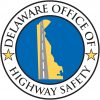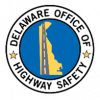DOVER, Del. (December 31, 2024) – The Delaware Office of Highway Safety (OHS), Delaware State Police, and local law enforcement partnered to conduct a Driving Under the Influence (DUI) Checkpoint on Friday, December 27, 2024, in the Smyrna area.
There were approximately 472 vehicles that drove through the checkpoint. The enforcement resulted in five DUI arrests and the issuance of 32 other traffic tickets. In addition to getting impaired drivers off the road, these enforcement checks are an opportunity to positively inform and educate the public on safe driving habits.
“Thank you to the Delaware State Police, local law enforcement officers, and DelDOT personnel who assisted with the operation of the checkpoint. Their dedication and commitment to improving safety in the First State truly makes a difference.” said Sharon Bryson, Director, Delaware Office of Highway Safety. “Driving under the influence of any substance is dangerous and illegal. There are many consequences to impaired driving, the worst being fatality and serious injury. Planning a safe and sober ride can help save lives and avoid the burdens that come with a DUI.”
To help reduce drunk driving in Delaware for the New Year’s Eve holiday, OHS is once again launching the Sober Rides initiative. Thanks to the program’s very generous sponsors, people can claim a $20 voucher for Uber or Lyft that will be valid from 5:00 p.m. on December 31 to 2:30 a.m. on January 1. QR codes will be on posters, table tents, and business cards at local bars and restaurants. If you are interested in becoming a sponsor, please contact the Delaware Office of Highway Safety at dshs_ohs@delaware.gov or 302-744-2740.


About the Delaware Office of Highway Safety
The Office of Highway Safety (OHS) is committed to improving the safety of Delaware’s motoring public by focusing on behavioral traffic safety issues, such as impaired driving, seat belt use, speeding, child passenger safety, pedestrian and bicycle safety, motorcycle safety, and teen driving issues. FAQs can be found at ArriveAliveDE.com. Follow OHS on the Delaware Office of Highway Safety website, Facebook, X (Twitter), and Instagram.
Media Contact:
Delaware Office Of Highway Safety
Meghan Niddrie
Meghan.Niddrie@Delaware.gov
302-744-2517
